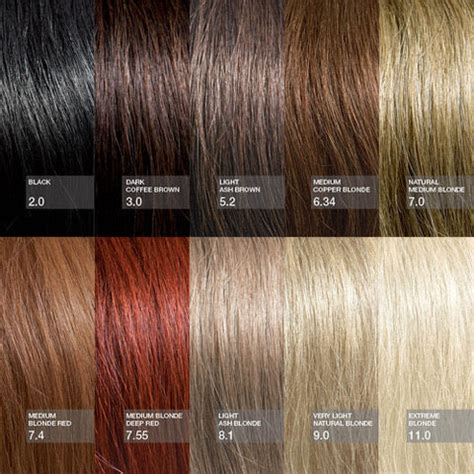Introduction

Embracing your natural hair texture is a beautiful form of self-expression. However, enhancing its beauty with a complementary hair color can elevate your style and boost your confidence. With the vast array of hair colors available, it’s crucial to find the most flattering shade that complements your skin tone, eye color, and personal preferences. This comprehensive guide explores the best hair colors for natural hair, providing expert insights, tips, and inspiration to help you make an informed decision.
Determining Your Hair Color Undertones
The first step to selecting the ideal hair color is determining your hair’s undertones. These subtle hues can be warm (gold, orange, or reddish), cool (blue, purple, or violet), or neutral (a blend of both). Here’s a simple test to identify your undertones:
- Examine your wrist veins under natural light. If they appear greenish, you have warm undertones. If they’re more blue or purple, you have cool undertones.
- Observe your jewelry preferences. If gold jewelry complements your skin, you likely have warm undertones. If silver jewelry enhances your appearance, you may have cool undertones.
5 Best Hair Colors for Natural Hair
1. Honey Blonde
- Warm Undertones: If your skin has golden or peachy hues, honey blonde is an excellent choice. This warm and inviting shade adds a touch of radiance to your complexion.
- Cool Undertones: For those with cool undertones, ash blonde or beige blonde are flattering variations that neutralize any yellowness.
- Motivation: Honey blonde evokes warmth, sunshine, and a youthful glow.
- Benefits: Complements a wide range of skin tones, creates a natural-looking highlight, and adds volume and dimension to hair.
2. Caramel Brown
- Warm Undertones: A beautiful choice for those with warm undertones, caramel brown adds depth and richness while maintaining a natural appearance.
- Cool Undertones: If your undertones are cool, consider chestnut brown or chocolate brown, which provide a more vibrant and sophisticated look.
- Pain Point: Caramel brown can appear drab if it’s not professionally applied to ensure proper color saturation.
- Effective Strategy: Opt for a balayage technique to create subtle highlights that blend seamlessly with your natural hair color.
3. Auburn Red
- Warm Undertones: Auburn red is a stunning shade that brings out the warmth in your skin tone. It ranges from copper to mahogany, offering a variety of options to suit your preferences.
- Cool Undertones: To avoid a clashing effect, opt for a deep auburn or burgundy shade that complements your cool undertones.
- Why it Matters: Auburn red is a bold and eye-catching color that exudes confidence and individuality.
- Benefits: Enhances natural curls and coils, adds vibrancy and depth, and can help cover gray hairs.
4. Burgundy Purple
- Warm Undertones: For those with warm undertones, burgundy purple adds a touch of richness and depth to their hair.
- Cool Undertones: If your undertones are cool, a deep plum or violet shade will complement your skin tone and enhance your hair’s natural shine.
- Pain Point: Burgundy purple can fade quickly, requiring regular touch-ups to maintain its vibrancy.
- Effective Strategy: Use color-protecting shampoos and conditioners to extend the life of your dye.
5. Jet Black
- Warm Undertones: Jet black can appear harsh against warm undertones, so consider adding subtle highlights in a warm brown shade to create a more natural and flattering look.
- Cool Undertones: For cool undertones, jet black is a striking and sophisticated choice that emphasizes your hair’s texture and definition.
- Motivation: Jet black exudes elegance and mystery, creating a dramatic and unforgettable look.
- Benefits: Adds volume and thickness to hair, reduces brassiness, and covers gray hairs effectively.
Additional Tips for Selecting Hair Color
- Consider your eye color: Green eyes look great with warm shades like honey blonde and caramel brown. Blue eyes are complemented by cool shades like ash blonde and beige blonde. Brown eyes can wear a wide range of colors, from natural browns to vibrant reds and purples.
- Don’t be afraid to experiment: Try out different shades with temporary hair color or clip-in extensions to see what suits you best before committing to a permanent color change.
- Consult a professional: A skilled hair colorist can provide expert advice and help you achieve the desired results while minimizing damage to your natural hair.
Table 1: Hair Color Undertones
| Appearance | Warm Undertones | Cool Undertones | Neutral Undertones |
|---|---|---|---|
| Veins | Greenish | Blue or Purple | Combination of Greenish and Blue |
| Jewelry | Gold | Silver | Either Gold or Silver |
Table 2: Best Hair Colors for Warm Undertones
| Hair Color | Skin Tones | Eye Colors |
|---|---|---|
| Honey Blonde | Golden, Peachy | Green, Hazel |
| Caramel Brown | Golden, Warm | Green, Brown |
| Auburn Red | Warm, Yellow | Green, Brown, Blue |
| Burgundy Purple | Warm, Reddish | Green, Hazel, Brown |
Table 3: Best Hair Colors for Cool Undertones
| Hair Color | Skin Tones | Eye Colors |
|---|---|---|
| Ash Blonde | Cool, Pinkish | Blue, Green |
| Beige Blonde | Cool, Yellowish | Blue, Hazel |
| Chestnut Brown | Cool, Rosy | Blue, Brown |
| Plum Purple | Cool, Blueish | Blue, Brown |
Table 4: Hair Color Benefits and Pain Points
| Hair Color | Benefits | Pain Points |
|---|---|---|
| Honey Blonde | Warmth, Radiance, Volume | Can fade if not applied correctly |
| Caramel Brown | Depth, Richness, Natural Look | Can appear drab if not applied professionally |
| Auburn Red | Confidence, Vibrancy, Gray Coverage | Can fade quickly |
| Burgundy Purple | Richness, Depth, Shine | Requires regular touch-ups to maintain vibrancy |
| Jet Black | Elegance, Volume, Gray Coverage | Can appear harsh against warm undertones |
